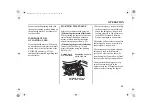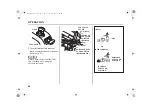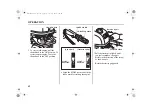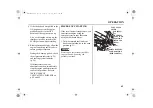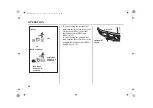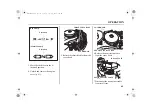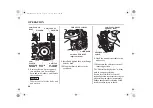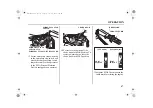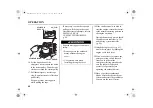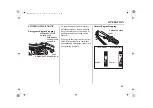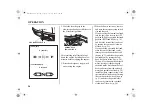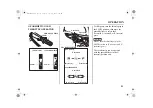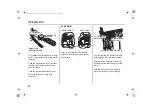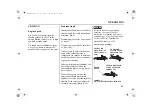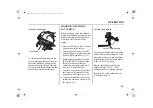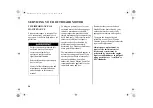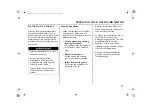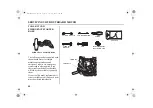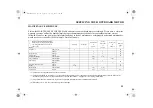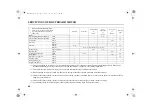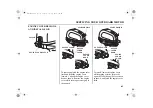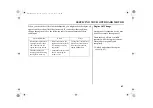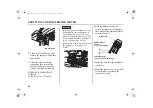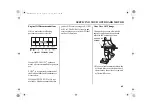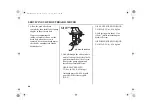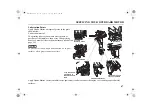
53
OPERATION
CRUISING
Engine Speed
For best fuel economy, limit the
throttle opening to 80%. Use the
throttle friction control (p. 51) to help
you hold a steady speed.
For rough water conditions or large
waves, slow down to prevent the
propeller from rising out of the water.
Transom Angle
Install the outboard motor at the best
transom angle for stable cruising and
maximum power.
Transom angle too large: Causes boat
to ‘‘squat.’’
Transom angle too small: Causes boat
to ‘‘bow steer.’’
It is necessary to adjust the transom
angle of the outboard motor to
compensate for changes in boat load,
weight distribution, water conditions,
or propeller selection.
Under normal running conditions, the
boat will perform best when the
antiventilation plate is level with the
water surface.
When cruising into a high wind,
adjust the outboard motor down
slightly to level the boat and improve
stability. With a tail wind, adjust the
outboard motor up slightly (p. 34).
Excessive transom angle during
operation can cause propeller
ventilation, overheating, and water
pump damage. This type of damage is
not covered by the
Distributor’s
Limited Warranty
OUTBOARD
MOTOR ANGLE
ADJUSTED TOO
LOW
Transom Angle (Cruising)
OUTBOARD
MOTOR ANGLE
ADJUSTED TOO
HIGH
OUTBOARD MOTOR
ANGLE ADJUSTED
CORRECTLY
CORRECT
GIVES MAXIMUM PERFORMANCE
ROUGH
WAVES
31ZVC6000.book Page 53 Tuesday, June 28, 2016 1:09 PM

